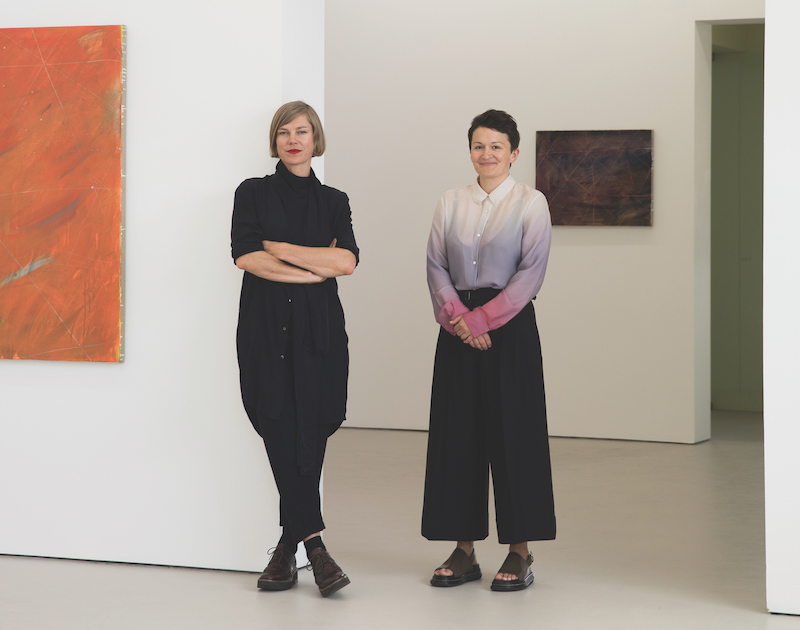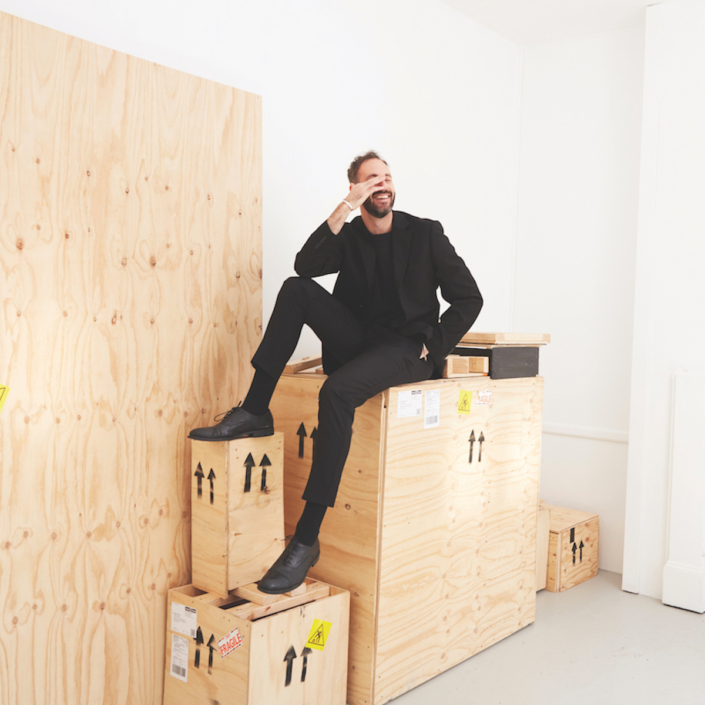Hopkinson Mossman: Looking Out
A mix of originality, ambition and drive has seen many of New Zealand gallery Hopkinson Mossman’s artists establish acclaimed international profiles, and catapulted this relatively young space to the top of the Aotearoa art scene.
Words: Lucinda Bennett
Photography: David Straight
Nestled above a street of mechanics and luxury car dealerships is Hopkinson Mossman, one of the leading contemporary galleries in Auckland. On any given day, you might ascend the stairs to be greeted gently by Bones, the gallery dog, or to see co-directors Sarah Hopkinson and Danae Mossman working side-by-side in their pale green office, or making coffee and chatting to visitors in the book-lined foyer. The mood may be calm, but the program is ambitious, with solo presentations from gallery artists regularly complemented by curated exhibitions, often featuring international guests such as Ellen Cantor, Hany Armanious and Phillip Lai. Representing a number of high-profile contemporary artists – including Turner Prize 2018 nominee Luke Willis Thompson, Walters Prize 2018 nominee Ruth Buchanan and past and future Venice Biennale representatives Peter Robinson, Bill Culbert and Dane Mitchell – for Sarah and Danae, Hopkinson Mossman is an ideological endeavour, not just a commercial one.
When taking on new artists, the gallerists look for “talent, criticality, originality, ambition, drive – and we have to love them and their work”, Mossman tells me. “Beyond exhibitions and sales, which are of course critical, we provide broader support for our artists, to enable them to push their practice forward; to keep momentum. Many of our New Zealand artists are based abroad. We support these artists to work in the context that is most relevant and vital to their practice, to reach a wider audience and be in dialogue with the most relevant and critical contemporary art internationally. And we work to translate these practices back here.”
The international profiles enjoyed by so many of their artists is by no means a coincidence. As Hopkinson explains, it has been a priority since the get go. “When we opened, we wanted to address the lack of support for New Zealand artists working internationally. So many great ex-pats were – and still are – living abroad, doing super interesting things and accumulating impressive CVs, but that wasn’t always being translated back to New Zealand. I think our strategy – the way we work with our artists and build a program with international resonance – is distinctive.”
In the eight years since they first opened their doors (initially as Hopkinson Cundy, with premises just behind Auckland’s Karangahape Road), Hopkinson Mossman’s stable of artists has grown to 15 – although many of these have been with the gallery since inception. Fiona Connor, Nick Austin and Tahi Moore were all involved in the now-fabled artist-run initiative Gambia Castle alongside Hopkinson, who served as writer, administrator and often-time curator for the space. Even back then, Hopkinson’s focus was international, with Gambia Castle playing host to a number of group shows featuring big names such as Frances Stark and Francis Alÿs. These names provide a clue as to the kind of work that excites the pair.
“Danae and I have similar but not identical taste, and of course often our interests are inevitably linked back to our own program – that is the critical core of our thinking,” Hopkinson tell me. “Because we travel for art fairs, we are able to engage internationally – something we know is super important for our program and our artists.” Perhaps unsurprisingly, both Hopkinson and Mossman are readers, regularly inspired by sources sitting slightly outside the expected art world bubble. “We tend to read in tandem, so at any one time our thinking can be influenced by Maggie Nelson, for example, or a really good article on octopi in the London Review of Books.”
As of March this year, Hopkinson Mossman has taken an unusual step for a New Zealand gallery and opened a second space. “Most of our stable wasn’t represented in Wellington,” says Mossman. “There was an awareness of their work, but the ability to engage directly with the way an artist makes an exhibition is critical to understanding their practice, as is getting up close to the work. We thought we’d make that part a bit easier for a Wellington audience.”
She continues: “Wellington is a really interesting city, with a very engaged, culturally literate audience and a strong institutional presence. We wanted to be part of that, to widen the conversation here. Plus we love making exhibitions, and we get to make more of them this way!” When asked if they have discerned any differences between their Auckland and Wellington collectors, Mossman explains that their program attracts “curious, engaged, interesting collectors – it’s not a geographical distinction”.






